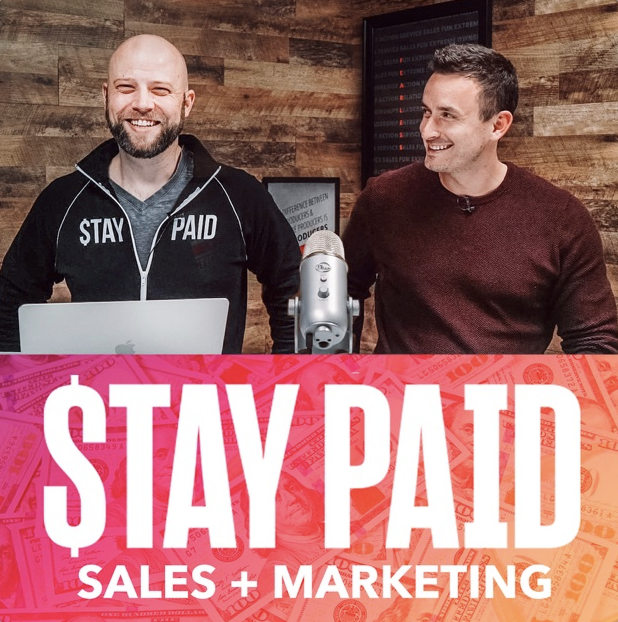Ep 97: How to Improve Your Google Ranking by Thinking Organically (with Perry Marshall)
Perry Marshall is a leading business consultant and the author of Ultimate Guide to Google AdWords (the top selling book on internet advertising). On a previous episode of Stay Paid, he spoke with Luke and Josh about the many ways the 80/20 rule can be applied to business.
Today, Perry discusses the connections between business and nature, and explains how these principles can shape your approach to SEO and social media marketing.
Key Points:
- The business world and the natural world have a lot in common.
- By applying the Swiss Army Knife method, you can better connect with your ideal customers.
- Creativity can’t be forced, but you can refine and repurpose existing campaigns to create a better result.
Q: Talk to us about Evolution 2.0, and how you learned about business by studying nature.
When I was a young buck consultant, I had a couple of clients almost right out of the gate. Google AdWords was brand new, and the idea that you could bid on a keyword and have an ad suddenly appear … it was like magic. The magic of this was that I could write two or three ads and see how they were doing merely hours later.
Where this relates to nature is that the evolutionary process on Google is almost identical to the evolutionary process in nature. You’ve got all these ads on Google, and you’re trying to chisel your way in. Usually, the way you do it is by attaching a niche or a set of keywords that people aren’t really paying attention to. I would call that a “crack in the sidewalk.”
I would visualize it as a weed trying to press its way up through the sidewalk to get nutrients. And so, when I started going down this nature rabbit hole, I made this connection: business and nature can teach me about each other.
What questions would a Google ad ask you?
Q: Tell us about your Swiss Army Knife method.
My Swiss Army Knife is a tool we developed, which is now a piece of software. Each blade represents something different. The first thing we do when we sit down with a client is talk about relationships. We ask them to make lists.
- 5 Things Your Target Customer Likes
- 5 Things Your Target Customer Hates
- Your Customer’s 5 Best Friends
- 5 Positive/Negative Forces or Beliefs in Their Lives
By the time we get done with this blade, we’re already pulling in more information about their customers, their preferences, and their passions than anybody else has ever done.
Another blade is all the different forms of social proof you have.
- Demonstration (smash something with a hammer)
- Sinatra Test (“If you can make it here, you can make it anywhere”)
I’ve found that most companies only use about a third of the proof that they actually have.
Another component is visual/auditory/kinesthetic language. Take something your customer hates and describe it in kinesthetic language.
Q: How can you apply this approach to Google and social media marketing?
At the end of the day, Google is going to give the ad space to whoever makes them the most money per 1,000 impressions. You can either pay more money, or you can write better ads—they’ll be happy to take your money either way.
Essentially, Facebook and Instagram are the same way. You are in a competitive environment, and the weed wants to come through the sidewalk. We realized we needed to come up with a systematic method of creativity. We have ideas we can pull out of a hat that will work 10 percent of the time instead of 2 percent of the time.
Q: Is the system in your choice of words or what you know about your clients? How can our listeners put this system into place?
The system operates at every level of language. Let me give you two different extremes. One of the blades of our Swiss Army Knife is granular things like rhyming or switching this word for that word. And that is useful in a certain context—where an ad is going really well and you’re trying to squeeze a little more juice out of the orange.
The other is a grand level, like the stages of an epic story. We help people do this. We have software, and we have a professional copywriter who walks you through the process. We also have videos that allow you to manually do it. If you go to perrymarshall.com and search for “Swiss Army Knife,” both versions are there.
One of my friends is Larry Kim of Wordstream. Larry knows exactly what Google advertisers do. They never test anywhere near as many ads as they should. It’s the same with all the other platforms. Most advertisers are only getting 40–60 percent of what they should be getting.
Q: Can you talk about what the PIVOT method is, and how people can apply it to their business?
There are a couple of ways. When you sell a product and there’s a little bit of a service behind it, maybe you should lead with the service and let the product tag along. Or, if you usually lead with the service, lead with the product.
Another part of PIVOT is disqualification. When Facebook advertising came out, it probably worked for about 15 percent of businesses. We made an “Is Facebook for Me” quiz? We told people to go to this webpage and score themselves. If they got a 5 or less, they shouldn’t waste their money marketing on Facebook. We’ve kept updating this quiz, and you can still go take it.
This is a PIVOT because when you put a roadblock in front of your customer, and you say, “We’re not for everybody,” everybody’s defenses go down.
I do not believe that sales and marketing is a “convincing people” process. It is a disqualification process. Get rid of the people who you shouldn’t sell to, and life is so much better.
Action Items:
- What is the value proposition that you’ve been presenting to your client? What is the secondary thing you pitch? Try presenting your secondary proposition as your primary benefit.
Connect with Perry:
Evolution 2.0 (comes with digital bonuses for businesses)















 Soundcloud
Soundcloud iHeart Radio
iHeart Radio Spotify
Spotify Spotify
Spotify


